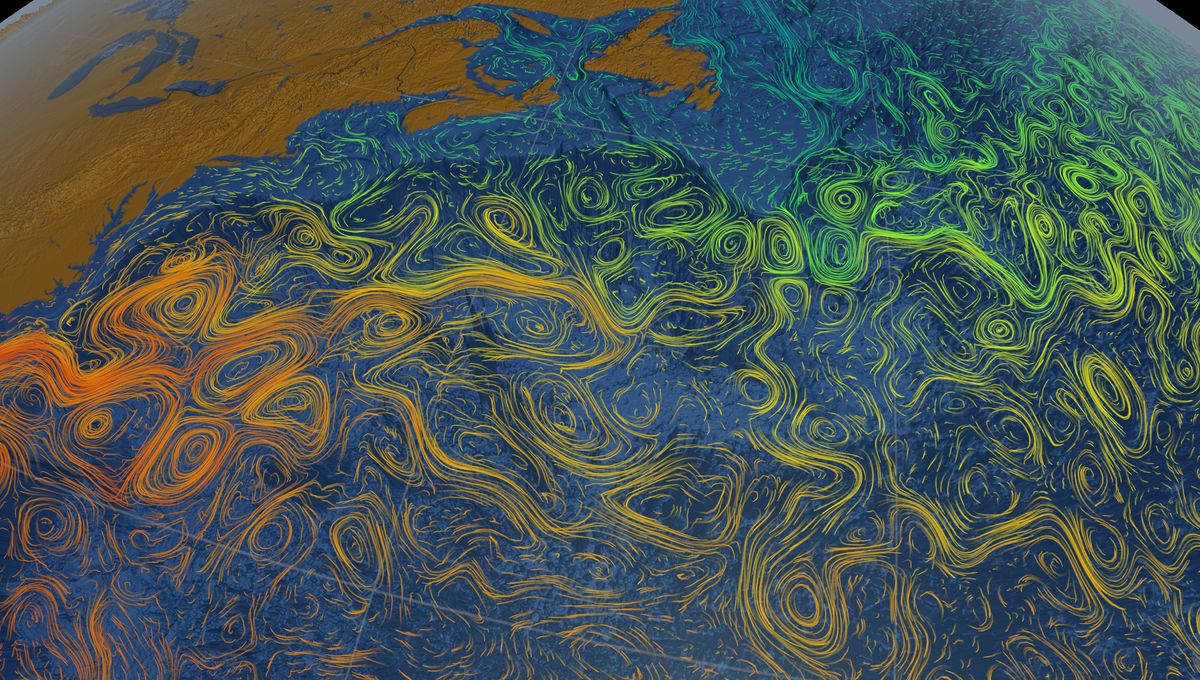
One of the big questions around climate change is how it will impact the Gulf Stream. Judging by how it fared during the last Ice Age, it’s looking increasingly likely that it will become weakened as the world warms, potentially causing a shake-up of the climate of Europe and beyond.
The Gulf Stream is part of the North Atlantic Gyre, a clockwise-moving highway of ocean currents driven by wind patterns that play a role in maintaining the climate of the US East Coast and parts of Europe.
In a new study, scientists at University College London (UCL) concluded that the North Atlantic Gyre was unexpectedly stronger during the last Ice Age than today because of more powerful winds across the subtropical North Atlantic.
The fossilized remains of microorganisms called foraminifera in the ocean sediment suggest the Gulf Stream was around 1 kilometer (0.6 miles) deeper around 20,000 years ago compared to today, reaching depths of up to 2.5 kilometers (1.5 miles). They also imply it was powerful due to stronger winds and denser waters.
“We found that during the last ice age, the Gulf Stream was much stronger because of stronger winds across the subtropical North Atlantic. As a result, the Gulf Stream was still moving lots of heat northwards, despite the rest of the planet being far colder,” Dr Jack Wharton, lead author from the UCL Department of Geography, said in a statement.
This has implications for the future, the researchers say, as it highlights how the Gulf Stream is sensitive to changes in wind patterns like the ones we expect to see as the climate crisis deepens.
“If in the future winds are weaker, as shown in a recent study using climate models, it could mean a weaker Gulf Stream and a cooler Europe,” added Dr Wharton.
The Gulf Stream is also a cog in a broader and more complex system called the Atlantic Meridional Overturning Circulation (AMOC), which involves the northward flow of warm water in the Atlantic’s upper layers and the southward flow of cold, salty, deep water.
“Rather than the established conveyor belt metaphor, perhaps it is better to think of the AMOC as a series of interconnected loops. There is the subtropical loop—that the Gulf Stream is part of—and a subpolar loop, which carries heat further northwards into the Arctic,” explained Professor David Thornalley, study co-author from UCL Geography.
“During the last ice age, our findings show that the subtropical loop was stronger than it is today, whereas the subpolar loop is thought to have been weaker. Therefore, when investigating anthropogenic climate change and the AMOC, we need to consider how these different parts may change and what climate impacts each is associated with,” Thornalley added.
Scientists have previously expressed concerns that climate change is already weakening the AMOC and the worrying trend is set to continue in the decades ahead. Melting glacial water from the Arctic could disrupt deepwater formation, preventing warm tropical water from reaching Europe and potentially cooling the continent.
If the AMOC were to totally collapse – an unlikely but possible scenario under harsh climate change – it could cool parts of Europe by 10 to 15°C (18 to 27°F).
“It’s not always recognized how much ocean currents are responsible for transferring heat around the planet and shaping our climate. Paradoxically, the warming of the climate could cool down much of Europe by disrupting the AMOC. Our new research adds to this understanding, and shows that the weakening of the winds which drive the Gulf Stream could reduce the circulation of heat, further affecting the continent,” noted co-author Professor Mark Maslin, also from UCL Geography.
The new study is published in the journal Nature.
Source Link: Deep Sea Fossils Bring Worrying News Of The Gulf Stream's Future